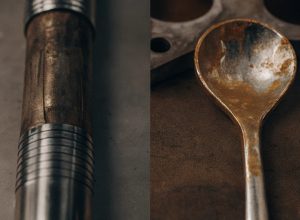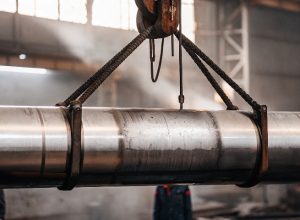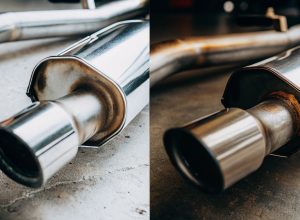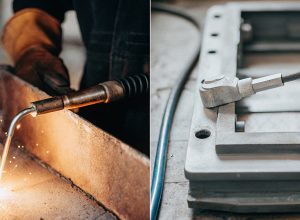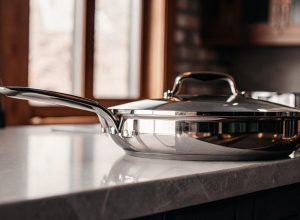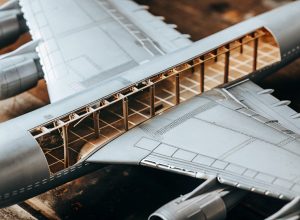Confused by titanium terminology? You hear Ti-6Al-4V and Grade 5 used for the same material, which can make sourcing tricky. Let’s clear up this simple but vital point.
Ti-6Al-4V is the chemical designation for Grade 5 titanium1. It is the most common and versatile titanium alloy, prized for its excellent combination of high strength, light weight, and strong corrosion resistance2. The names are used interchangeably to refer to the same material3.
As the leader of a global titanium sales team, this is one of the first questions new buyers ask. They see "Ti-6Al-4V" on a technical drawing and "Grade 5" on a quote and want to ensure they’re getting the right thing. The simple answer is yes, they are the same. But the more important questions my clients, like procurement manager David in Germany, have are about its performance and cost. Why choose this specific alloy, and is it worth the price? Let’s break down what makes this material the workhorse of the titanium industry.
Is Ti-6Al-4V Expensive?
Investing in high-performance materials is a significant budget decision. The premium price of Ti-6Al-4V might make you hesitate before committing to an order for a critical project.
Yes, Ti-6Al-4V is considered expensive when compared to common industrial metals like stainless steel or aluminum. Its price is justified by its superior strength-to-weight ratio, exceptional corrosion resistance, and reliable performance in demanding, high-stakes environments4 like aerospace and medical implants.
At Shaanxi Titonest Metal, we’ve observed that Ti-6Al-4V’s cost primarily reflects its essential value in applications where failure is not an option. Our partnerships with OEMs across Europe and North America confirm this alloy’s critical role5. When an aerospace manufacturer needs a component that is both incredibly strong and as light as possible6 to save fuel, the material cost is secondary to performance and safety. Likewise, for a medical implant that must last for decades inside the human body7 without reacting or degrading, the value of Ti-6Al-4V is unmatched. The price is a reflection of its unique capabilities.
A Comparison of Value, Not Just Price
To understand the cost, you have to look at what you get in return. Compared to other metals, Grade 5 titanium occupies a unique position.
| Material | Relative Density | Relative Strength | Corrosion Resistance | Relative Cost |
|---|---|---|---|---|
| Ti-6Al-4V (Grade 5) | Low | Very High | Excellent | Very High |
| 316 Stainless Steel | High | Medium | Good | Medium |
| 7075 Aluminum | Very Low | High | Poor | Low |
| Commercially Pure Ti | Low | Medium | Excellent | High |
This table shows that while steel is strong, it’s heavy. Aluminum is light but lacks strength and corrosion resistance. Ti-6Al-4V gives you the best of both worlds: strength approaching that of steel at nearly half the weight8.
Does Ti-6Al-4V Rust?
Choosing a metal for a harsh environment is a big risk. Corrosion can lead to premature component failure, forcing costly downtime and replacements that hurt your bottom line.
No, Ti-6Al-4V does not rust. It instantly forms a stable, thin, and self-healing layer of titanium dioxide9 on its surface when exposed to air or moisture. This passive oxide layer acts as a barrier, protecting the metal from corrosion even in saltwater or acidic chemicals.
From our experience supplying titanium to offshore and chemical industries, Ti-6Al-4V is virtually immune to the kind of oxidation that causes rust in steel10. This protective oxide layer is the key. If the surface gets scratched, a new protective layer forms immediately as long as oxygen is present. This is why our zirconium and titanium alloys are often selected for harsh marine or acid-prone environments. They provide excellent long-term performance where other metals would quickly degrade11. A client in the chemical processing industry once told me they replaced stainless steel parts every 18 months due to corrosion. After switching to Grade 5, the parts have lasted over a decade with no issues.
How the Protective Oxide Layer Works
The science behind its corrosion resistance is a key advantage. Unlike iron oxide (rust), which is flaky and falls off to expose fresh metal to more corrosion, titanium dioxide is different.
- Formation: The layer forms instantly on contact with air.
- Adhesion: It is extremely thin but tough and strongly bonded to the titanium underneath.
- Self-Healing: If the surface is mechanically damaged, the exposed titanium reacts with oxygen to immediately repair the protective film.
This makes it an ideal material for long-term, low-maintenance applications.
Why Is Grade 5 Titanium So Expensive?
The price tag for Grade 5 titanium can be surprising. You might look at the quote and wonder if the high cost is truly justified by the material’s benefits.
Grade 5 titanium’s high cost comes from its complex, multi-stage manufacturing process12. This includes energy-intensive raw material extraction, alloying with expensive elements like vanadium, special vacuum melting to ensure purity, and difficult forging processes to meet strict industry standards.
As an alloy made of titanium, aluminum, and vanadium, Grade 5 requires a far more complex production path than steel. At our in-house smelting facility, we operate a 6.5-ton vacuum arc remelting (VAR) furnace. I can tell you firsthand that this process is energy-intensive and requires incredible precision. We have to melt the material multiple times in a vacuum to remove impurities and achieve the homogenous chemical structure that gives Grade 5 its strength. This process contributes significantly to its cost, especially when strict ASTM or aerospace-grade specifications must be met. Every step, from sourcing the raw ore to the final forged bar, demands tight control and specialized equipment.
From Raw Material to Final Product: A Cost Breakdown
The journey from sand to a finished titanium bar is long and adds cost at every stage.
- Kroll Process13: Extracting titanium sponge from ore is far more complex and energy-intensive than making iron from iron ore.
- Alloying: Vanadium, one of the key strengthening elements in Grade 5, is an expensive and strategically important metal on its own.
- Vacuum Melting: To meet aerospace purity standards, ingots are often melted two or three times in a VAR furnace. This uses huge amounts of electricity and time.
- Forging & Machining: Titanium is a difficult material to work with. It requires special tools, slower speeds, and more robust equipment than steel, adding to the final cost.
How Much Does Ti-6Al-4V Cost?
You need a clear number for your project budget. But when you ask for a price for Ti-6Al-4V, the answer often seems to fluctuate without a clear reason.
A fixed price for Ti-6Al-4V is impossible to quote without details. At current market of July in 2025, approximately, Ti-6Al-4V titanium bar as per ASTM B381 at Dia 40mm is around $20/kg in China14 .
The final cost depends heavily on the product form (bar, plate, sheet), exact specifications and certifications required (aerospace vs. industrial), the total order volume, and current market conditions for the raw materials
When clients ask me for a price, my first questions are always about the application and requirements. A large-diameter forged bar certified for a critical aerospace application will have a much higher per-kilogram cost than a standard industrial-grade plate. The additional testing, documentation, and processing needed for higher-spec materials are significant cost drivers. The best way to get an accurate price is to provide a detailed inquiry with all your project’s specifications. This allows us to account for all variables and give you a price that reflects your true needs.
Key Factors That Determine the Final Price
Understanding these variables will help you budget more effectively and see why prices can differ so much between quotes.
| Factor | Why It Affects Cost |
|---|---|
| Product Form | Forgings and thin sheets require more processing than standard bars or plates, increasing the cost. |
| Certifications | Aerospace (AMS) or medical (ASTM F136) grades require extensive testing and traceability, adding to the price. |
| Order Quantity | Larger orders often benefit from economies of scale, resulting in a lower price per kilogram. |
| Market Conditions | Prices for raw titanium sponge and alloying elements like vanadium fluctuate based on global supply and demand. |
Conclusion
In summary, Ti-6Al-4V is versatile Grade 5 titanium. Its high cost reflects its complex production and superior performance, making it a premium and reliable choice for critical applications.
-
Understanding this equivalence helps you avoid confusion when sourcing titanium and ensures you get the correct material for your project. ↩
-
Learning about these properties will help you see why this alloy is chosen for demanding applications. ↩
-
Clarifying this point ensures you don’t make costly mistakes when ordering or specifying titanium. ↩
-
Understanding its reliability can justify the investment in critical applications. ↩
-
Learning about its role highlights why it is so widely used and valued. ↩
-
This explains the material’s importance in reducing weight while maintaining strength in aerospace. ↩
-
Discovering its biocompatibility and durability can help you understand its medical applications. ↩
-
This comparison is vital for engineers and designers seeking optimal material performance. ↩
-
Understanding this mechanism reveals why the alloy is so durable in harsh environments. ↩
-
This knowledge can save you from costly maintenance and replacement in corrosive settings. ↩
-
Learning about its longevity can help you justify its higher upfront cost. ↩
-
Understanding the production challenges explains the material’s higher price. ↩
-
Understanding this process gives you insight into the origins and complexity of titanium manufacturing. ↩
-
Getting up-to-date pricing information helps you budget accurately for your project. ↩







